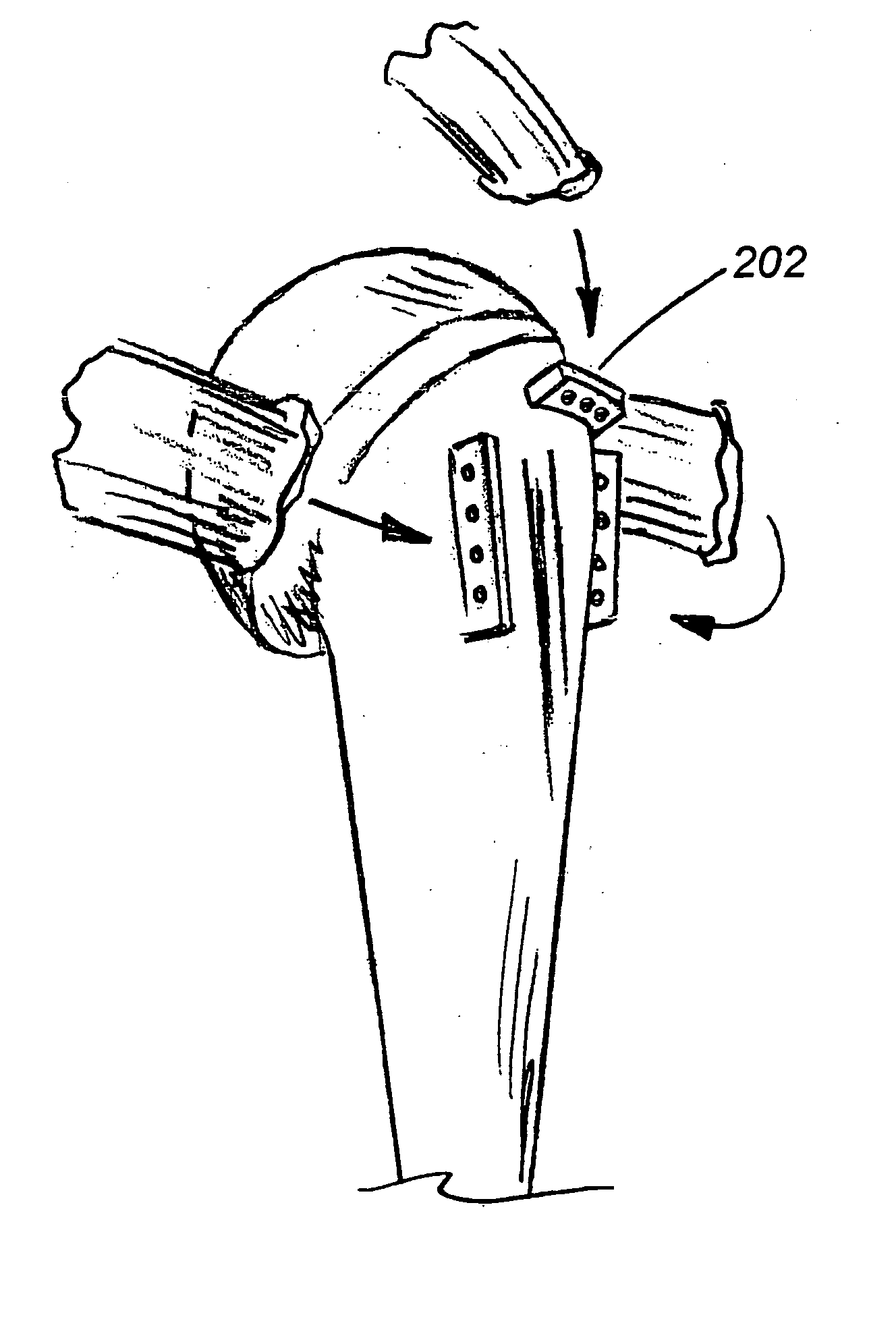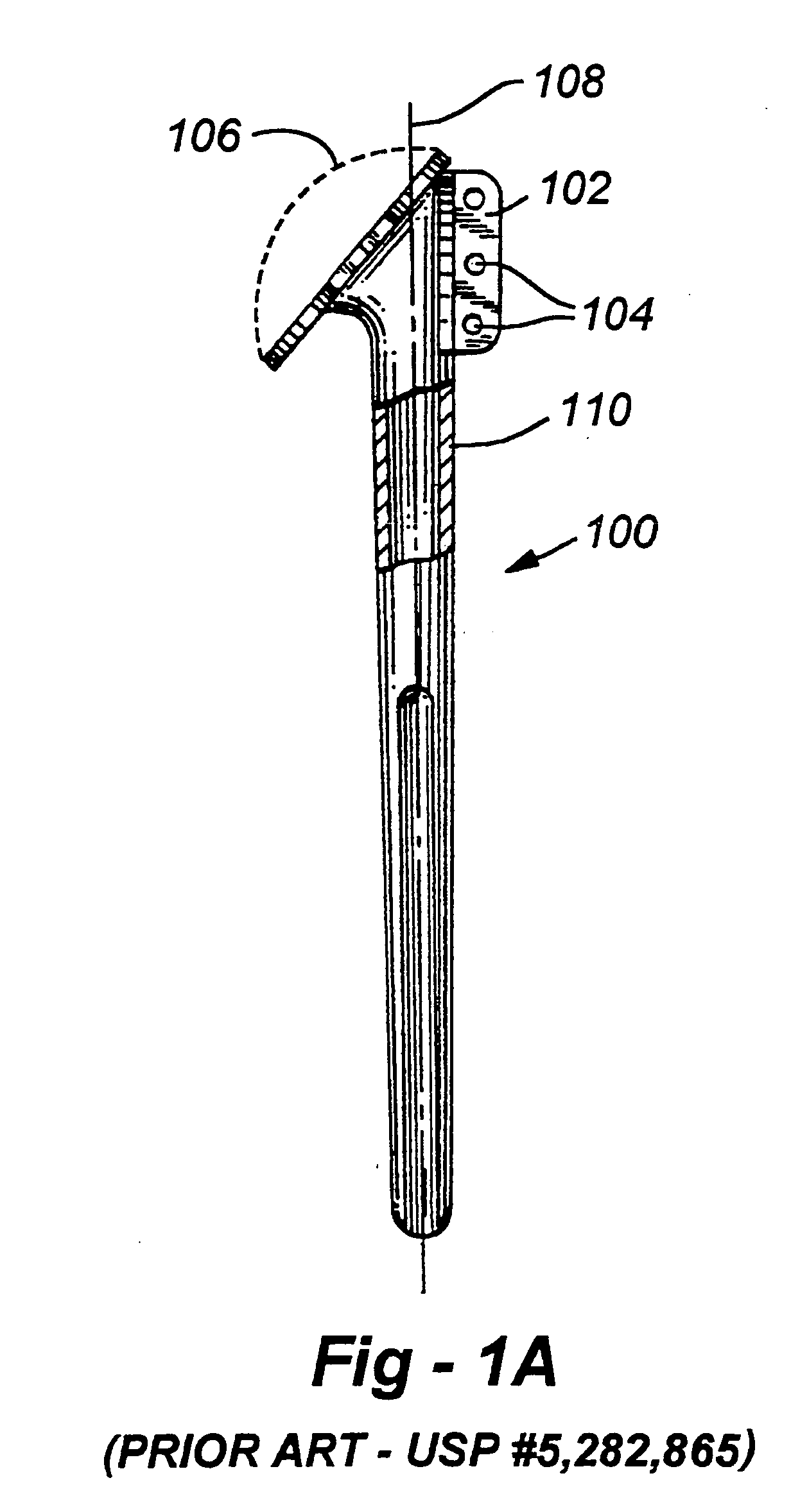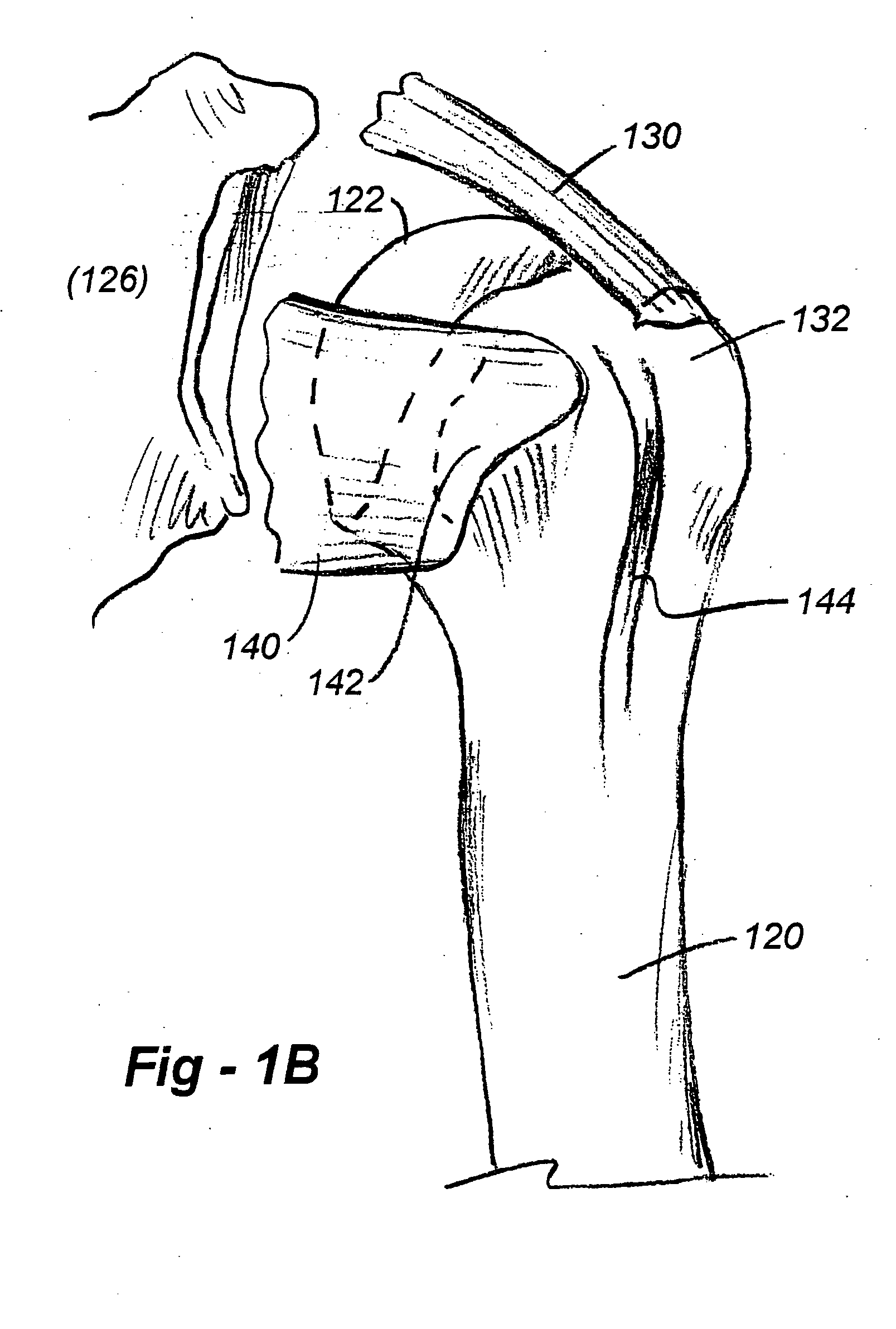Shoulder prosthesis with anatomic reattachment features
a shoulder and anatomic technology, applied in the field of orthopaedic surgery, can solve the problems of poor fixation in a non-anatomic arrangement, reduced range of motion and strength following the procedure, and vertical orientation tabs such as tab 102 in fig. 1 do not adequately accommodate human anatomy, so as to improve the anatomic attachment area of tendon or bon
- Summary
- Abstract
- Description
- Claims
- Application Information
AI Technical Summary
Benefits of technology
Problems solved by technology
Method used
Image
Examples
Embodiment Construction
[0018] As discussed above, this invention is directed to humeral prostheses providing more anatomical attachment configurations for bone and / or tendons, with the goal being a greater range of post-operative motion and / or strength. Before discussing the various embodiments of the invention in detail, it will be helpful to introduce aspects of the anatomy associated with procedures contemplated herein.
[0019]FIG. 1B is a drawing of a human proximal humerus showing the natural anatomic tendon attachment areas. The humerus, 120, includes a proximal portion having a head 122 with an articulating surface adapted to co-act with the glenoid bone 126 in the shoulder joint. The supraspinatus tendon 130 lies flat on the proximal humerus, and attaches at a section of bone called the greater tuberosity 132. The subscapularis tendon 140 extends across the side of the joint and attaches at the lesser tuberosity 142. A groove 144 receives the biceps tendon (not shown).
[0020]FIG. 1C is a drawing wh...
PUM
| Property | Measurement | Unit |
|---|---|---|
| length | aaaaa | aaaaa |
| strength | aaaaa | aaaaa |
| area | aaaaa | aaaaa |
Abstract
Description
Claims
Application Information
 Login to View More
Login to View More - R&D
- Intellectual Property
- Life Sciences
- Materials
- Tech Scout
- Unparalleled Data Quality
- Higher Quality Content
- 60% Fewer Hallucinations
Browse by: Latest US Patents, China's latest patents, Technical Efficacy Thesaurus, Application Domain, Technology Topic, Popular Technical Reports.
© 2025 PatSnap. All rights reserved.Legal|Privacy policy|Modern Slavery Act Transparency Statement|Sitemap|About US| Contact US: help@patsnap.com



